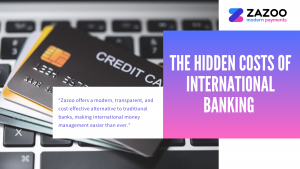In today’s digital age, the Creators’ Economy has emerged as a powerful force, enabling individuals from diverse fields to monetize their talents, skills, and creativity directly. Thanks to the advent of social media platforms, content-sharing platforms, and digital marketplaces, creators now have unprecedented opportunities to showcase their work, connect with audiences, and generate income. However, amidst this creative revolution, challenges surrounding payment mechanisms and financial sustainability persist. In this article, we will explore the various aspects of the Creators’ Economy, delve into different types of creators, and shed light on the challenges faced by businesses and individual creators in terms of payments for their work.
The Rise of the Creators’ Economy:
The Creators’ Economy encompasses a wide range of individuals who produce original content across various mediums, including but not limited to art, music, writing, photography, video production, and more. The growth of this economy can be attributed to several factors:
- Digital Transformation: The widespread adoption of the internet, social media, and digital technologies has democratised content creation, distribution, and consumption. Anyone with access to the internet can now become a creator and share their work with a global audience.
- Changing Consumer Behaviour: Audiences are increasingly seeking unique, personalised, and relatable content. As a result, creators who produce niche, specialised, or niche-specific content have found opportunities to thrive.
- Direct-to-Consumer Platforms: Content-sharing platforms like YouTube, Instagram, TikTok, and Twitch have provided creators with direct access to their audiences, enabling them to build communities and monetize their content through advertising, brand partnerships, memberships, and donations.
Types of Creators:
Within the Creators’ Economy, there is a diverse range of creators, each specialising in their respective fields:
Visual Artists: This category includes painters, illustrators, graphic designers, and photographers who monetize their work through commissioned pieces, prints, merchandise, and online galleries.
Musicians and Performers: Musicians, singers, bands, and performers leverage platforms like Spotify, SoundCloud, Bandcamp, and live performances to monetize their music through streaming, merchandise, ticket sales, and crowdfunding.
Writers and Journalists: Authors, bloggers, journalists, and poets monetize their work through book sales, subscriptions, sponsored content, and freelance writing.
Video Creators: YouTubers, vloggers, filmmakers, and video editors monetize their content through advertising revenue, brand partnerships, merchandise, and crowdfunding platforms like Patreon.
Challenges in Payments for Creators:
While the Creators’ Economy presents exciting opportunities for individuals to turn their passions into profitable ventures, they face several challenges, particularly when it comes to payments:
Ad Revenue and Monetization Models: Relying solely on ad revenue can be unpredictable and insufficient for many creators. Fluctuating CPM (Cost Per Mille) rates, changing algorithms, and demonetization policies can significantly impact their income. Therefore, diversifying revenue streams is crucial.
Copyright Infringement and Intellectual Property: Creators often encounter copyright infringement issues, where their work is used or reproduced without permission or proper attribution. Enforcing copyright can be time-consuming and costly, impacting their ability to monetize their creations.
Payment Processing and Transaction Fees: Creators face challenges related to payment processing, such as high transaction fees, currency conversion charges, and delayed payouts. These factors can significantly eat into their earnings and hinder their financial growth.
Financial Instability and Inconsistent Income: Many creators face financial instability due to inconsistent income flows. Some months may be exceptionally lucrative, while others may be lean, making it difficult to manage expenses and plan for the future.
Lack of Financial Education: Many creators lack financial literacy and struggle with financial management, taxes, contracts, and legal complexities associated with their work. This knowledge gap can lead to financial pitfalls and potential exploitation.
Overcoming Payment Challenges:
To address the payment challenges faced by creators, businesses and platforms can take the following measures:
- Diversify Revenue Streams: Encourage creators to explore multiple income streams, such as merchandise sales, crowdfunding, brand partnerships, sponsored content, subscriptions, and direct fan support through platforms like Patreon, Ko-fi, and Buy Me a Coffee.
- Transparent Payment Systems: Platforms and businesses should offer transparent payment systems with clear policies, low transaction fees, and prompt payouts to creators. Providing detailed analytics and insights can help creators understand their earnings better.
- Copyright Protection: Platforms should implement robust copyright protection measures to prevent unauthorised use of creators’ work. Strengthening DMCA takedown procedures and offering tools for reporting copyright infringement can protect creators’ intellectual property rights.
- Financial Support and Education: Businesses can provide creators with resources and educational content to improve their financial literacy. This includes information on tax obligations, budgeting, contract negotiation, and financial planning.
- Collaborative Partnerships: Platforms and businesses can establish collaborative partnerships with creators, fostering mutually beneficial relationships. This involves fair revenue-sharing models, transparent agreements, and open communication channels to address concerns and feedback.
The Creators’ Economy has revolutionised the way individuals monetize their creativity and talents, offering unprecedented opportunities to build sustainable careers. While payment challenges persist, businesses and platforms must strive to provide transparent and supportive environments for creators to thrive. By addressing these challenges and empowering creators financially, we can ensure the continued growth and success of the Creators’ Economy in the years to come.








